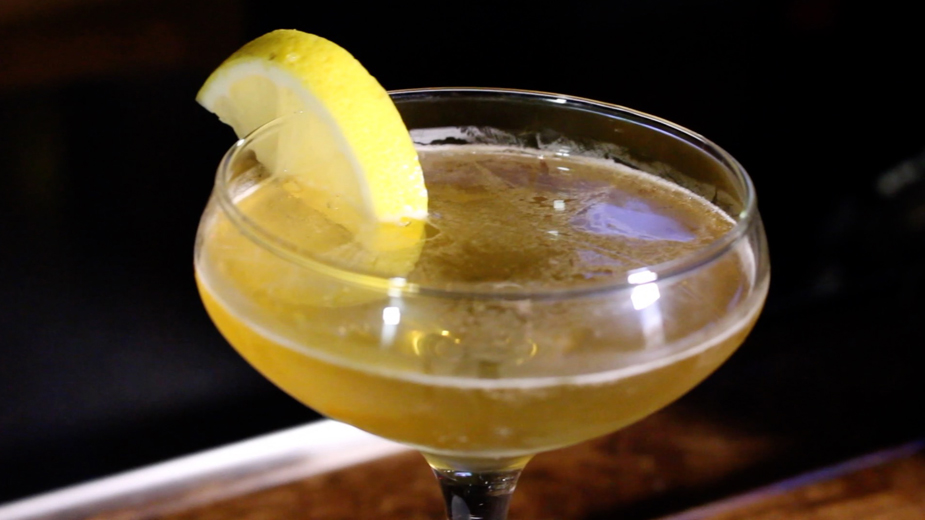In Cocktails, What’s Old Is Trendy Again
If you’ve ever wanted to consume ethyl alcohol the way Americans did during Prohibition and as shown on “Madmen” set in the 1950s, this list of cocktails is for you. From the obscure to the once again trendy, here’s something for everyone who imbibes.
So, tilt back your fedora or cloche hat and sample some of these timeless drinks.
Singapore Sling
Slings were not originally considered cocktails, the latter of which was always said to contain bitters. The sling family of drinks usually has a base of alcohol, to which a fruit flavor and water or club soda are added.
No one knows exactly who created the original Singapore Sling recipe, but various incarnations of the classic cocktail abound today.
While the Raffles Hotel in Singapore claims to have invented the concoction in 1915, the drink dates to the 1890s or even earlier. Gin, limejuice and cherry brandy or a cherry liqueur form the basis of the older Singapore Sling formula, but you might want to experiment with this recipe, a more modern interpretation.
In a tall Collins glass combine:
- 3 ounces pineapple juice
- 1½ ounces gin
- ¼ ounce Benedictine
- ½ ounce Cherry Heering
- ¼ ounce Cointreau
- ¼ ounce lime juice
Add ice and club soda. Garnish with a slice of orange, pineapple and one cherry.
Old-Fashioned
Few classic drinks have enjoyed the resurgence of the old-fashioned in recent years. Journalist and social critic H.L. Mencken, “The Sage of Baltimore,” called this cocktail “the godfather of them all.” In fact, the recipe for the old-fashioned is essentially the original cocktail recipe: spirits (in this case, rye or bourbon) sugar, water and Angostura bitters.
However, there are several contemporary versions. A Gilded Age take on the drink adds a fruit garnish, and the Wisconsin version calls for brandy instead of rye or bourbon.
- 1 sugar cube
- 4 dashes Angostura bitters
- 2 ounces rye or bourbon
In an old-fashioned glass, add bitters to a sugar cube and muddle. Add rye or bourbon and a few splashes of water. Garnish with an orange slice.
Sidecar
A classic – recently revived from oblivion – and a Prohibition-era cocktail is the sidecar, which is both sweet and memorable.
Legend has it that the drink was named after the motorcycle sidecar of the soldier who invented it in Paris in the late 1920s.
The reality is more mundane, says noted bartender and author Dale DeGroff, who traces its origins to 19th century New Orleans.
As with many other classic cocktails, there’s disagreement over the recipe. Part of the sours family of drinks, of which the margarita is a member, the sidecar uses cognac as the base liquor, a sweetener and lemon juice.
- 1½ ounces cognac
- ¾ ounce Cointreau
- ¾ ounce lemon juice
Pour ingredients into a cocktail shaker filled with ice. Pour into a cocktail glass with sugar on the rim and garnish with a lemon peel.
Rusty Nail
A popular drink from the early 1960s, the rusty nail is one of the very few cocktails to include Drambuie, supposedly a favorite drink of the Rat Pack. Simple and strong, the rusty nail became popular at dive bars and celebrity haunts alike. Drambuie is a liqueur made from Scotch, herbs and spices.
- 1½ ounces Scotch
- ½ ounce Drambuie
Pour Scotch into an old-fashioned glass filled with ice. Add Drambuie and stir. Garnish with a lemon slice.
Stinger
If you’re in the mood for one drink and only one, the powerful stinger might be for you.
The stinger enjoyed its heyday during the 1940s, but its origins go back at least to the 1920s. Often described as a mainstay of the society set, it was a favorite drink of journalist Anderson Cooper’s maternal grandfather, Reginald Vanderbilt. Some recipes call for more or less crème de menthe, so you might want to experiment with the proportions.
- 2¼ ounces cognac
- ½ to ¾ ounce white crème de menthe
Combine all ingredients with ice in a cocktail shaker. Shake and pour into a cocktail glass.
Copyright 2024 The Business Journal, Youngstown, Ohio.



